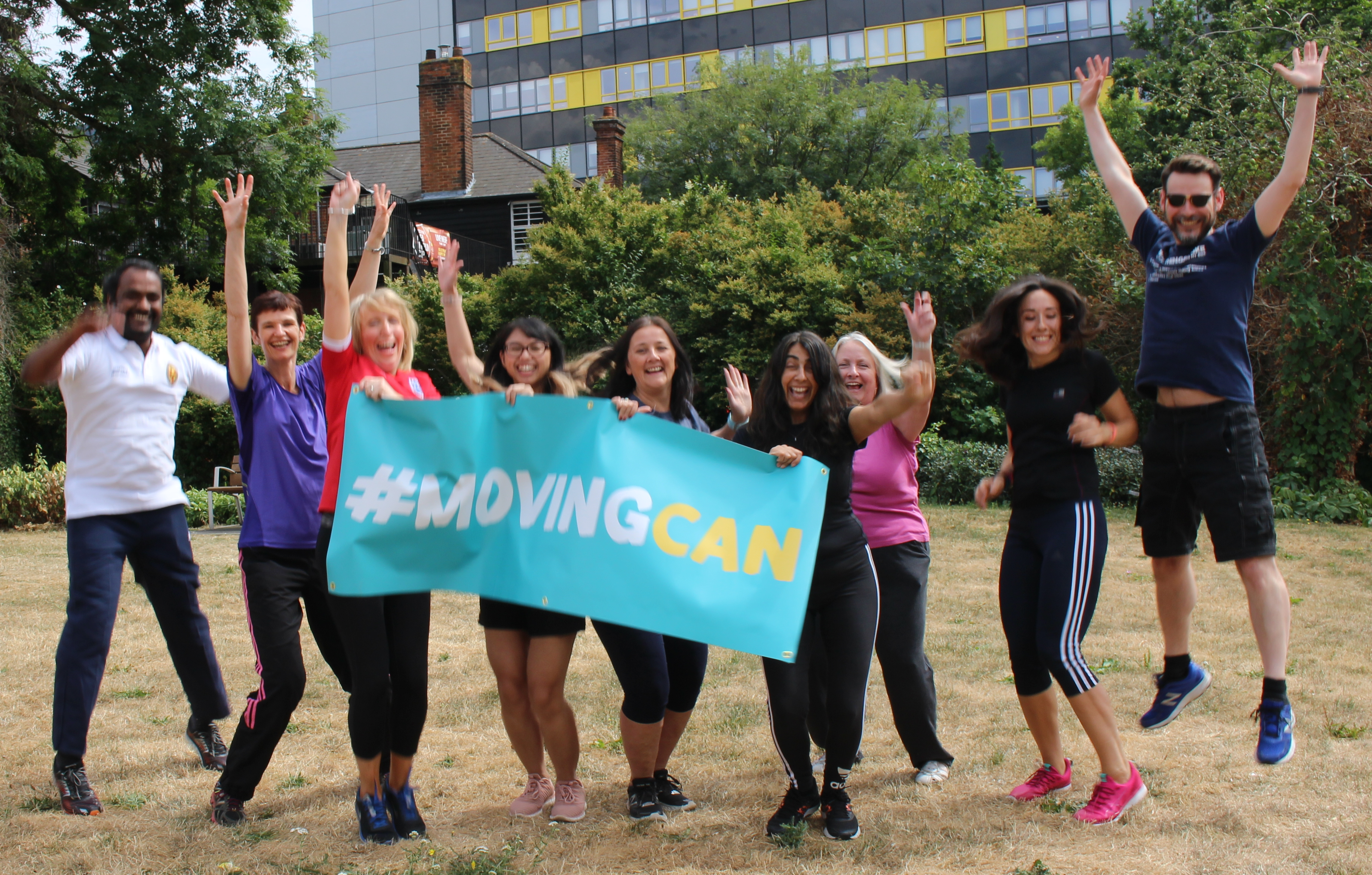Lisa McNally @Lisa_McNally1, Director of Public Health, Bracknell Forest Council
How many benefits of physical activity can you think of? One new initiative is thinking big. They’re promoting 31 reasons to get active across the 31 days of August 2018. #MovingCan(1)is the first health promotion campaign of the new Frimley Health & Care Integrated Care System (ICS)(2), a partnership of NHS, social care and voluntary sector organisations in Berkshire, Surrey and Hampshire.
The aim is simple. On each day of August, all the partner organisations involved in the ICS will simultaneously promote a specific benefit of physical activity. For example, on the 3rdAugust the message will be about how moving more can lower blood pressure, while on the 10th, the focus will be on how exercise reduces stress. Later in the month, the benefits of physical activity for asthma, immunity, mobility and maintaining independence will all be highlighted. The overriding message is clear – the list of things that #MovingCan do for you is a very long one!
A campaign toolkit will facilitate participation across all the ICS partner organisations. It has promotional content for use on social media for each day of the month, including suggested tweets, Facebook posts, images and videos. Every organisation will know what to promote and when, creating a high impact and coordinated initiative.
In line with evidence on behaviour change(3), the campaign will not just educate but also prompt people into action. Social media posts will point to a #MovingCan ‘landing webpage’ containing links to hundreds of physical activity opportunities in each area of the ICS geography.
In that sense, the #MovingCan initiative is very much in line with the strategic objectives of the WHO Global Action Plan on Physical Activity (GAPPA)(4). It not only enhances appreciation of the multiple benefits of regular physical activity (GAPPA objective one) but also promotes opportunities for activity across multiple settings (objective three) while enhancing multi-sectoral partnerships (objective four). The driving force behind the #MovingCan campaign is concern for the sustainability of health and social care systems. As stated in GAPPA, “Failure to act to increase levels of physical activity will see related costs continue to rise”.
In England, Integrated Care Systems like Frimley Health & Care ICS have been tasked with creating more sustainable health and social care services through effective partnership and transformation(5). This includes a ‘radical upgrade in prevention’(6). Since research on the relative cost effectiveness of various illness prevention approaches shows that physical activity programmes are top performers, saving more ‘quality of life years’ (QALYs) for less money(7), they must be an obvious priority.
#MovingCan isn’t just about health and care organisations. The initiative will take a ‘community asset based’ approach, promoting opportunities for physical activity that are run by local people for local people. These include including walking groups, dance clubs and cycle rides. So, work to increase physical activity is being done with communities, not to them. With this approach, we hope to push forward not just an individual campaign, but a whole ‘social movement’ of active people and active places.
Join us! #MovingCan


References
- #MovingCan Campaign Page. Frimley Health & Care Integrated Care System.Available at:movingcan.info(accessed on 8 July 2018).
- NHS England (2018). Frimley Health and Care. Available at: https://www.england.nhs.uk/integratedcare/integrated-care-systems/frimley-ics/(accessed on 8 July 2018).
- Kelly MP, Barker M. (2016). Why is changing health-related behaviour so difficult? Public Health , Volume 136 , 109 – 116 DOI: https://doi.org/10.1016/j.puhe.2016.03.030
- World Health Organisation (2018) More active people for a healthier world: The global action plan on physical activity 2018 – 2030. Available at: http://www.who.int/ncds/prevention/physical-activity/gappa/ (accessed on 8 July 2018).
- Ham C. (2018) Making sense of integrated care systems, integrated care partnerships and accountable care organisations in the NHS in England. London: The King’s Fund. Available at: https://www.kingsfund.org.uk/publications/making-sense-integrated-care-systems(accessed on 7 July 2018).
- NHS England (2014). The NHS Five Year Forward View. Available at: https://www.england.nhs.uk/wp-content/uploads/2014/10/5yfv-web.pdf(accessed on 7 July 2018).
- Owen L, Morgan A, Fischer A, Ellis S, Hoy A, Kelly MP. (2012) The cost-effectiveness of public health interventions. Journal of Public Health, Volume 34, Issue 1, Pages 37–45, https://doi.org/10.1093/pubmed/fdr075